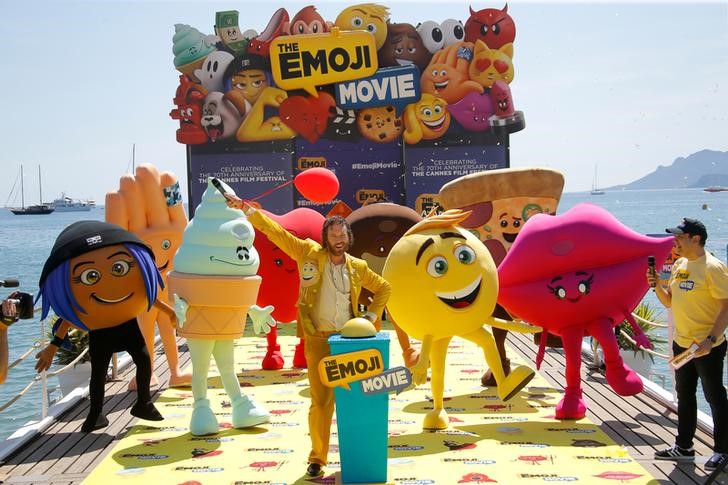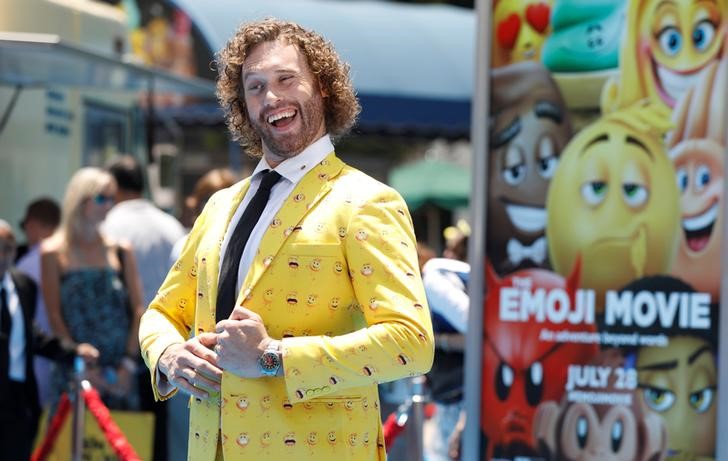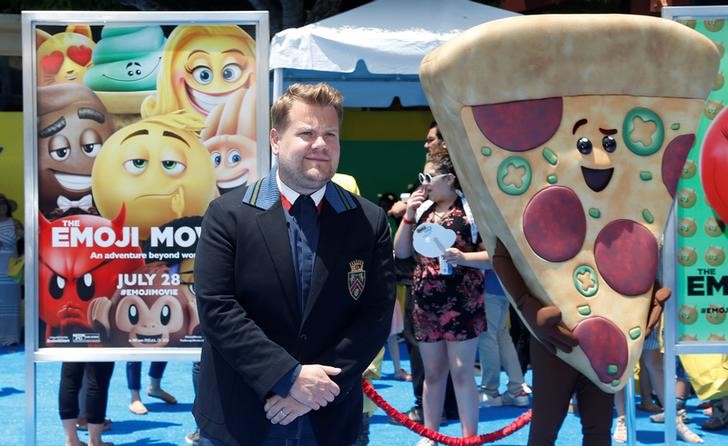LOS ANGELES (Reuters) – Cheery Hi-5, a snobbish Poop and a conflicted Meh have starring roles in the animated “The Emoji Movie,” which imagines a world inside cellphones where emojis rebel against portraying just one emotion all their lives.
Yet the dozen or so people who select and release the tiny, ubiquitous characters globally are far removed from the glitz of Hollywood, where the Sony Pictures movie, which begins its global rollout on Friday, was developed.
The humans who toil in obscurity to shape and approve new emojis are part of the Unicode Consortium, a Silicon Valley-based group of computer and software corporations and individual volunteers with backgrounds in technology, encoding and linguistics.
From smiley faces to thumbs up, there are now some 2,600 different emojis worldwide and, according to a July Facebook Inc report, more than 60 million a day are sent on the No. 1 social media network alone.
The consortium approves about 50-100 new emojis every year, not counting the different skin tones for people emoji, after a rigorous application and review process, said Mark Davis, president and co-founder of the group.
The latest batch, released in June and reaching phones and other devices in coming months, include a star-struck emoji, an exploding head, a group of wizards, mermaids and a woman wearing a hijab.
“We get submissions from all over the world,” Davis said in an interview. “The hijab emoji came from a Saudi Arabian young woman who is living in Germany who made a very compelling proposal. I’m looking forward to the exploding head – I think that’s going to be very popular.
“People need to make a case as to why they think their emoji is going to be frequently used, how it breaks new ground, how it is different from other emojis that have already been encoded.”
Logos, brands and emojis tied to specific companies are not accepted. “We also don’t accept specific people. We did encode a cowboy but we wouldn’t encode John Wayne,” Davis said.
Some concepts just do not translate as emoji.
Cast member Christina Aguilera at the premiere for “The Emoji Movie” in Los Angeles, California, U.S., July 23, 2017. REUTERS/Mario Anzuoni“Anything that needs a lot of detail to explain or understand is trouble. It’s also hard to make an emoji for something abstract – like good governance, or a responsible president,” Davis said.
Davis said there are 2,666 emojis worldwide. The LOL emoji with tears of laughter is the most popular, according to a July Facebook survey of its 2 billion monthly users, followed by the heart eyes emoji. Italians and Spaniards favor the kissing emoji.
The consortium played no part in the making of “The Emoji Movie,” Davis said, because all of its work is open-source, available to all, and no permissioning was needed.
Nevertheless, he never imagined that the computer-generated punctuation marks that originated in Japan in the 1980s would become Hollywood stars.
“That’s something that never really crossed our minds,” Davis said.
(Reporting by Jill Serjeant; Editing by Richard Chang)
Copyright 2017 Thomson Reuters. Click for Restrictions.





